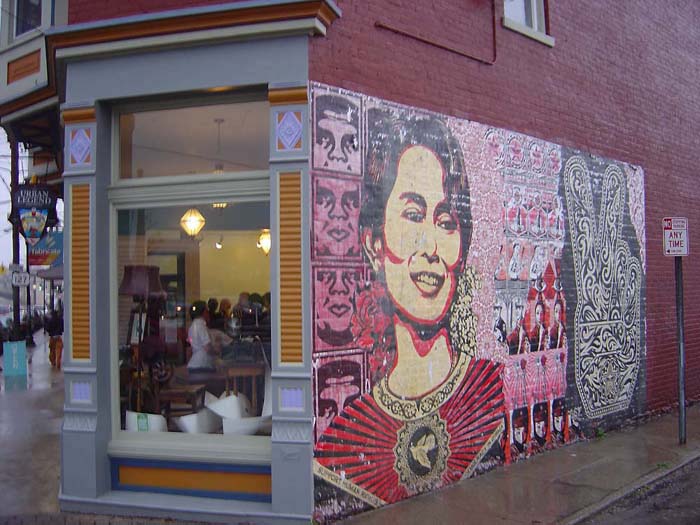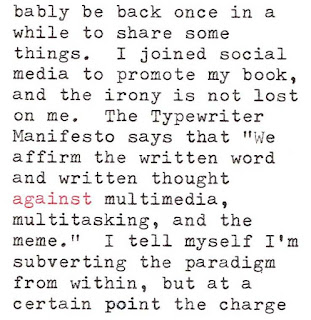One of the great advantages of a typewriter is that, unlike the device on which you're reading this, it doesn't let people or robots halfway around the world steal your information.
But typewriters that use carbon ribbons, like my Olivetti Editor 2, do retain a record of what was written on them.

The used carbon ribbon can be read ...

... and I couldn't resist the temptation to investigate the old ribbon that came with my Editor. I discovered that this ribbon was used in Arkansas from 1986 to 2002, before sitting around another 16 years until I bought the typewriter for $8.99. The machine was used for business, religion, humor, and more.

Because of the motion of the ribbon and occasional corrections, reading this text is not as easy as just picking up a book. Let's see if you can do it. (Of course, I am not reproducing any personal identifying information.) I'll provide a hint for every snippet.
1. What a nurse!

5. I really can save lives!

6. Kickin' 'em out:

7. Ever more angels in yellow vehicles:

8. You scratch my soul and I'll scratch yours:

9. Love's luncheon:

10. Figaro! Figaro! Figaro!

11. Swept off to Oz!

12. Pauline lessons:

13. Riddles of omnipotence:

14. Wardrobe malpractice:

15. Model behavior:

16. Loose lips:

17. Marked with a †

18. Preparing to be reunited:

19. Testing, testing:

Olivetti carbon ribbons are long, at least twice as long as ones for the IBM Selectric. This was quite a collection of information, and an intriguing glimpse into moments in the life of this typewriter and its former owners.

But typewriters that use carbon ribbons, like my Olivetti Editor 2, do retain a record of what was written on them.

The used carbon ribbon can be read ...

... and I couldn't resist the temptation to investigate the old ribbon that came with my Editor. I discovered that this ribbon was used in Arkansas from 1986 to 2002, before sitting around another 16 years until I bought the typewriter for $8.99. The machine was used for business, religion, humor, and more.

Because of the motion of the ribbon and occasional corrections, reading this text is not as easy as just picking up a book. Let's see if you can do it. (Of course, I am not reproducing any personal identifying information.) I'll provide a hint for every snippet.
1. What a nurse!
4. Hand over the mazuma, buster:

5. I really can save lives!

6. Kickin' 'em out:

7. Ever more angels in yellow vehicles:

8. You scratch my soul and I'll scratch yours:

9. Love's luncheon:

10. Figaro! Figaro! Figaro!

11. Swept off to Oz!

12. Pauline lessons:

13. Riddles of omnipotence:

14. Wardrobe malpractice:

15. Model behavior:

16. Loose lips:

17. Marked with a †

18. Preparing to be reunited:

19. Testing, testing:

Olivetti carbon ribbons are long, at least twice as long as ones for the IBM Selectric. This was quite a collection of information, and an intriguing glimpse into moments in the life of this typewriter and its former owners.
































